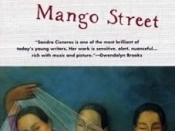Short, sometimes very short, essays, jumping from one topic to the next, comprise Sandra CisneroÃÂs novel, The House on Mango Street. The essays focus on topics from hair style and scent, to concepts of laughter, to neighbors, to various interactions between young women and young men. The book reads like a string of vignettes, which are ÃÂshort, usually descriptive literary sketches,ÃÂ rather than a novel. Indeed, the book has no plot. It merely describes various scenes and/or experiences of an adolescent girl growing up in a poor Latino section of Chicago.
The essays are choppy, with one not leading to the other, so it is not an interesting read. However, the book does paint vivid pictures that reflects that the main characterÃÂs experiences in her journey from childhood to adulthood are confusing to her.
For example, one of the essays describes a time before Esperanza has experienced any of the transition from child to adult.
Yet observations of her grandmotherÃÂs life make clear to Esperanza that she is aware of certain expectations of adulthood. Her entre into the subject begins with EsperanzaÃÂs description of her name, which she shares with her grandmother. The character does not like her name. ÃÂIt means sadness, it means waiting. . . . A muddy color.ÃÂ To Esperanza, her name is synonymous with broken spirit. She describes her grandmotherÃÂs youthful days in terms of an unbroken horse. Her grandmother was ÃÂa wild horse of a woman, so wild she wouldnÃÂt marry.ÃÂ Cisneros invokes images of stallions galloping freely on an open range. Then the grandmotherÃÂs father ÃÂthrew a sack over her head and carried her off.ÃÂ The grandmother responded by placing herself at a window, where she sat is sadness her ÃÂwhole life.ÃÂ The character and grandmother share the same name, but the younger...


